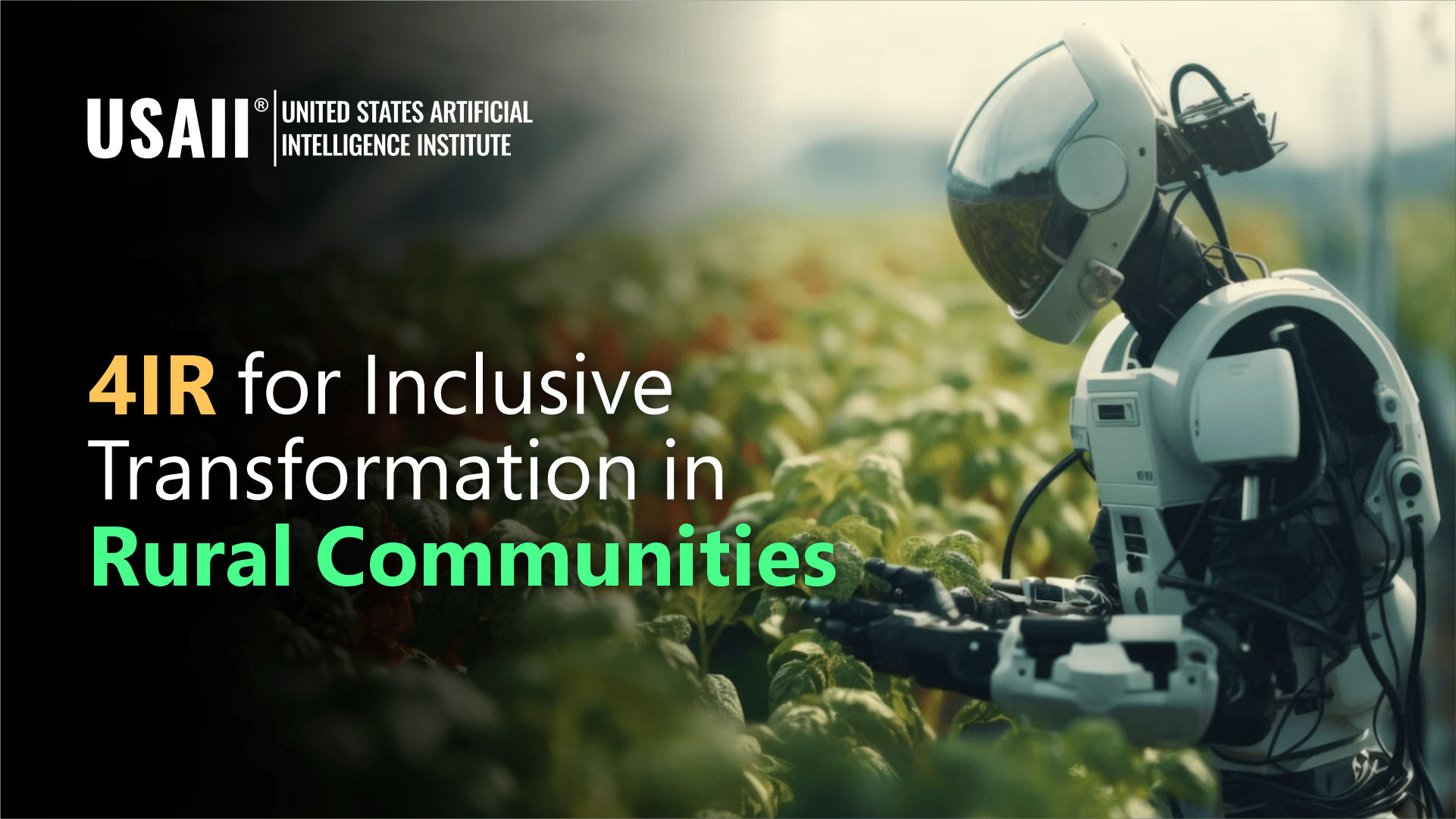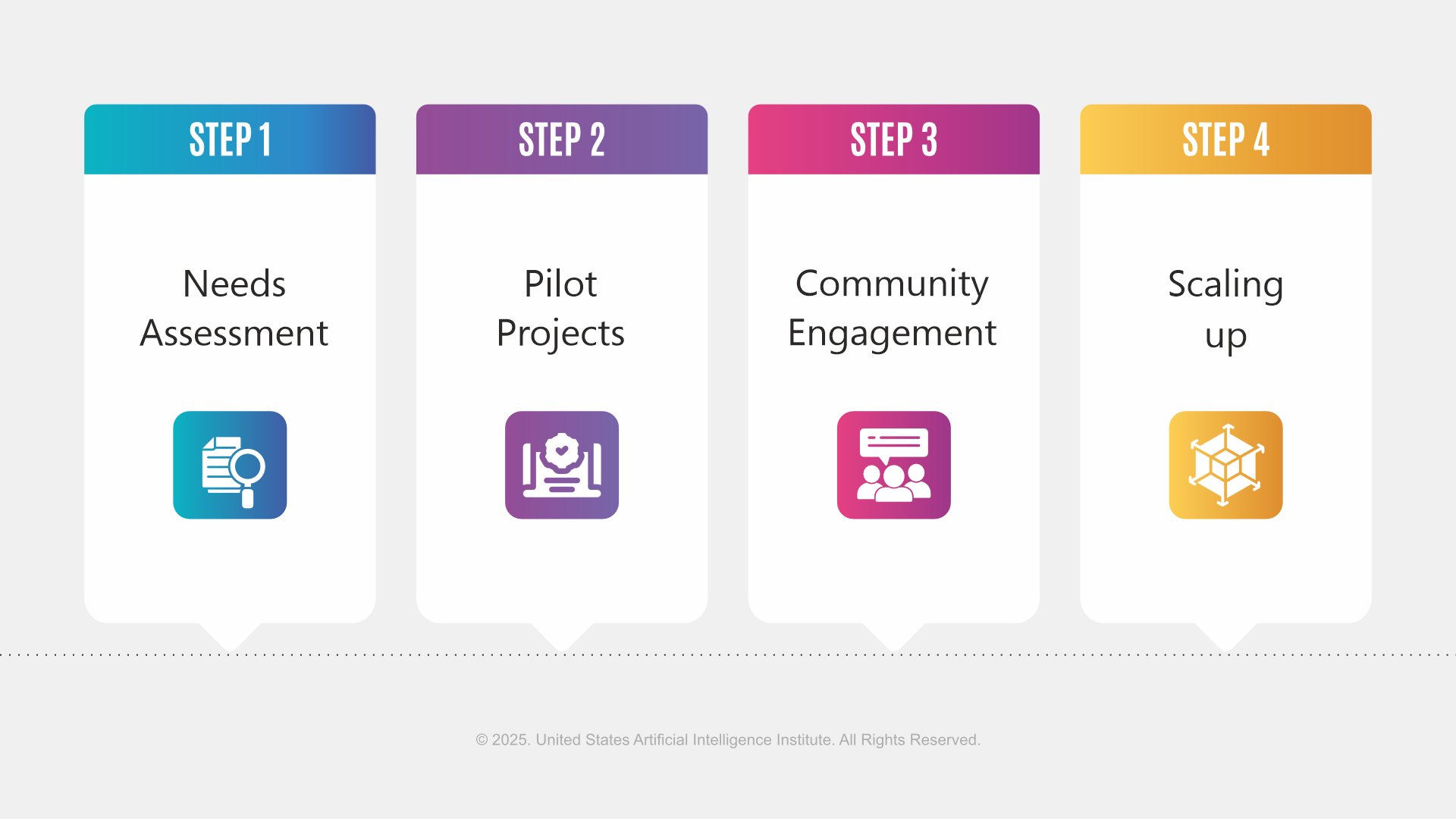
Introduction
The Fourth Industrial Revolution (4IR) is reshaping the world, blending physical, digital, and biological systems to create unprecedented opportunities. Artificial Intelligence (AI), a core driver of the Fourth Industrial Revolution (4IR), holds the potential to transform industries, improve efficiency, and enhance human lives. However, despite these advancements, the benefits are unevenly distributed. In developing nations, rural areas remain disconnected, with limited access to education, technology, and basic infrastructure.
Growing up in a developing country, I witnessed firsthand the challenges posed by poverty and inequality. While urban areas are gradually adopting AI—albeit without strong maturity—rural communities often remain excluded from its transformative potential.
This disparity inspired me to pursue a mission: to bring AI's transformative power to rural communities, demonstrating "the art of the possible."
This article explores how AI can bridge this digital divide, leveraging key AI technologies to address agriculture, education, and healthcare challenges. It also aligns these efforts with the United Nations' Sustainable Development Goals (SDGs) to ensure inclusive and sustainable growth.
Understanding the Digital Divide
The digital divide refers to the disparity between individuals and communities with access to modern information and communication technologies and those without. In rural areas of developing nations, this divide is evident due to several factors:
Although these barriers are significant, AI offers innovative solutions that can overcome traditional limitations, particularly when tailored to meet local needs and conditions.
To explore this potential, I will focus on three critical sectors: Agriculture, Education, and Healthcare. These areas present the most pressing challenges in rural communities, making them ideal for showcasing the transformative power of AI. By addressing issues like food security, access to quality education, and improved healthcare outcomes, AI can provide practical, scalable solutions that deliver meaningful change, even in resource-constrained environments.
AI in Agriculture: Enhancing Productivity and Sustainability
Agriculture is a primary livelihood in rural areas. AI technologies can optimize agricultural practices, improve yields, and reduce waste. Key AI solutions that can be leveraged include:
Practical Application
A solar-powered mobile app with preloaded AI tools could deliver these solutions. Farmers without consistent internet access could still use the app to analyze soil or access offline tutorials on sustainable farming practices.
AI in Education: Democratizing Learning Opportunities
Education is a cornerstone for development. Yet, rural schools often lack qualified teachers, resources, and access to quality learning materials. AI can address these gaps through:
Practical Application
Imagine a solar-powered tablet preloaded with an AI-based education platform. Students could access interactive lessons, games, and quizzes aligned with their curriculum, even in areas without internet access.
AI in Healthcare: Improving Access and Outcomes
Healthcare in rural areas often suffers from a shortage of doctors, facilities, and diagnostic tools. AI can bridge this gap by offering:
Practical Application
An AI-powered health assistant on a mobile device, operates offline, with preloaded diagnostic tools, health education content, and basic medical guidance. This device could periodically sync with centralized databases or healthcare providers when connectivity becomes available, ensuring updates and continuity of care. This would empower rural residents to manage their health effectively, even in areas with limited infrastructure.
Addressing Infrastructure Challenges
The absence of reliable electricity and internet in rural areas is a critical barrier to AI adoption. However, innovative solutions can help mitigate these barriers. These include:
Aligning with Sustainable Development Goals (SDGs)
The United Nations’ SDGs aim to reduce inequality and ensure sustainable development by 2030. AI-driven solutions in rural areas align with several key goals:
Building Trust and Adoption in Rural Communities
For AI to succeed in rural areas, trust and awareness are essential. Below are four (4) steps that outline a strategic step-by-step approach for building trust, increasing AI adoption, and accelerating its implementation in rural communities:

Step 1: Needs Assessment
Identify specific challenges faced by the community. Engage local stakeholders to understand their priorities and tailor AI solutions accordingly.
Step 2: Pilot Projects
Start with small-scale pilots to test the feasibility and ensure simplicity of technology: user-friendly interfaces and local languages to make AI tools accessible. An example of a pilot project will be introducing an AI-powered educational app to a single school or providing solar-powered devices to a farming community.
Step 3: Community Engagement
Involve community leaders and influencers to build trust and ensure buy-in and cultural alignment. Use relatable examples to explain AI’s benefits. For instance, show how AI can predict rainfall to
help farmers plan their crops. Highlight success stories to inspire wider adoption by showcasing tangible results, such as improved crop yields or enhanced learning outcomes, to build confidence.
Step 4: Scaling Up
Once a pilot proves successful, scale the solution to other communities. Seek partnerships with NGOs, government agencies, and tech companies to expand reach.
The Role of Partnerships and Benefits
Overcoming infrastructure challenges like unreliable electricity and internet requires solutions like solar-powered devices and offline AI tools. Partnerships with governments, NGOs, and tech companies can help deploy AI effectively in rural areas, improving access to essential services and fostering development.
Most organizations would make partnership decisions based on their strategic goals and Return on Investment (ROI). Digital transformation in rural areas has the potential to drive new revenue, improve efficiency, and support social responsibility.
Some of these key benefits include
Conclusion
The Fourth Industrial Revolution presents an unprecedented opportunity to bridge the digital divide and uplift rural communities. By leveraging AI and demonstrating practical applications, we can address critical challenges in agriculture, education, and healthcare, and empower these communities to improve their quality of life.
My vision is to showcase "the art of the possible" by proving that AI is not just a tool for urban elites but a transformative force for everyone, regardless of location or socioeconomic status.
The future is inclusive only if we make it so.
Follow us: